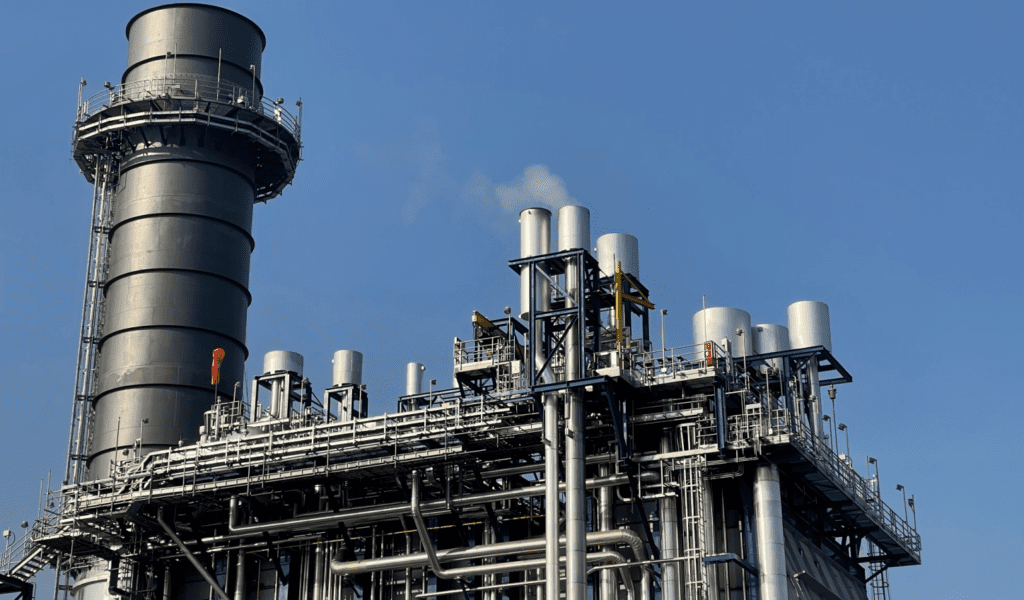Understanding Asset Management Metrics for Business Success.
Asset management metrics are critical tools that help
businesses measure, quantify, and optimize the performance of their assets.
These metrics give an unbiased and transparent image of how
assets are used, cared for, and managed, empowering businesses to make
well-informed decisions that boost productivity, cut expenses, and increase
efficiency.
Table Of
Contents:
1. The Importance of Measuring Production and
Maintenance Processes.
2. Judging Performance Through Asset Management
Metrics.
3. Identifying Areas for Further Investigation.
4. Asset Management Metrics as Enablers of
Continuous Improvement.
5. Collaborative Benefits of Common Asset
Management Metrics.
6. Framework for Benchmarking and Best
Practices.
7. Enhancing Staff Capability Through Asset
Management Metrics.
8. The Role of Leadership in Asset Management
Metrics.
9. Establishing and Maintaining the Importance
of Metrics.
10. Ensuring Data Visibility and Demonstrating
Importance.
11. Aligning Asset Management Data Ownership and
Accountability.
12. Ensuring Integrity in Calculation and
Reporting.
13. Leveraging Asset Performance Analysis.
14. Twelve Examples of Key Asset Performance
Metrics.
15. Engaging the Workforce in Continuous
Improvement.
The Role of Asset Management Metrics.
Asset management metrics fundamentally assess the health and
performance of a company’s assets.
They provide information about various aspects such as:
1.
Effectiveness of manufacturing processes.
2.
Efficiency of maintenance activities.
3.
Overall lifecycle of assets.
By tracking these metrics, businesses can identify areas for
improvement, anticipate potential failures, and plan for future investments.
Strategic Importance.
Metrics related to asset management are crucial for long-term
success and strategic planning in addition to operational effectiveness.
They assist companies in:
1. Determining the present condition of their assets.
2. Set attainable objectives and standards for subsequent
performance.
3. Adhere to laws and industry standards.
4. Uphold a high standard of dependability and safety.
Comprehensive Performance Analysis.
The ability of asset management metrics to present a
comprehensive picture of asset performance is one of its main benefits.
Organisations can successfully balance the costs and benefits
of their assets with this all-inclusive approach.
Businesses can maximise return on investment by identifying
the best time for asset replacement or upgrades by analysing metrics like asset
utilisation, downtime, and maintenance costs.
Driving Business Success.
Effective asset management metrics are essential for long-term
growth and profitability as companies fight to stay competitive in markets that
are getting harder to operate in.
They offer insightful information about the functionality and
state of assets, assisting in decision-making and promoting ongoing
development.
The Importance of Measuring Production and Maintenance Processes.
The efficiency of asset management is demonstrated by the
methodical measurement of the maintenance and production processes.
Businesses get a thorough grasp of these procedures’ efficacy,
efficiency, and overall performance by evaluating them.
This knowledge is essential to maintaining efficient
operations and advancing corporate objectives.
Basic Production Metrics.
Production metrics provide insights into throughput, quality,
and resource utilization within the manufacturing process.
Key Performance Indicators (KPIs) such as cycle time, yield rates,
and machine utilization rates allow businesses to:
1.
Monitor and optimize production activities.
2.
Identify bottlenecks and inefficiencies.
3.
Implement strategies for continuous improvement.
For instance, an increase in cycle time may signal the need
for process examination, possible re-engineering, debottlenecking, or equipment
upgrades to enhance productivity.
Basic Maintenance Metrics.
Maintenance metrics play an equally important role in asset management.
By evaluating maintenance activities through KPIs such as Mean
Time Between Failures (MTBF), Mean Time to Repair (MTTR), and maintenance cost
per unit, businesses can ensure their assets operate reliably and efficiently.
Regular monitoring of these metrics helps in:
1.
Predicting potential failures.
2.
Measure the effectiveness of the preventive
maintenance program.
3.
Reducing unplanned downtime.
4.
Maximising asset lifespan.
Continuous Improvement and Decision Making.
Managing Assets Metrics play a key role in pinpointing areas
that require improvement.
Leaders and
decision-makers can learn from patterns and trends found in the continuous
monitoring and analysis of production and maintenance processes.
For instance, persistent problems identified by maintenance
metrics may point to the need for investing in more dependable equipment or
providing additional staff training.
Businesses can improve operational efficiency and keep a
competitive edge by proactively addressing these areas.
Businesses can optimise operations and meet their goals while
maintaining strong asset performance with the help of production and
maintenance process measurement, which offers a data-driven basis.
Without these metrics, businesses might be operating in the
dark and miss important problems or expansion prospects.
The systematic measurement of production and maintenance
processes is indispensable for achieving business success in asset management.
Judging Performance Through Asset Management Metrics.
Metrics for asset management are crucial instruments for
evaluating the effectiveness of processes that are being measured.
This evaluation’s initial stage is to determine whether these
processes are in line with the general business requirements.
Metrics that show how well assets are being used to create
revenue include Return on Assets (ROA) and Asset Turnover Ratio.
A high ROA suggests a strong alignment between the business
and its goals since it shows how well the company is turning its investments
into profit.
Acquiring control over procedures is another essential
component of performance judgement.
When analysing the dependability and maintainability of
assets, metrics like Mean Time Between Failures (MTBF) and Mean Time to Repair
(MTTR) are helpful. Robust control over
asset performance is indicated by lower MTTR and higher MTBF values, which
minimise downtime and increase productivity.
This control is essential for making sure that the assets
support the operational goals of the company and are both functional.
Utilising resources efficiently is equally important. The
effectiveness of resource use is measured using metrics like capacity
utilisation rates and overall equipment effectiveness (OEE).
Assets with high OEE values are operating efficiently in terms
of availability, performance, and quality. Effective use of resources improves
the capacity to promptly and successfully satisfy customer demands while also
maximising costs.
These decisions made based on asset management metrics yield actionable
insights rather than just a momentary picture of the state of affairs.
Finding inefficient areas, for example, can lead to more
focused maintenance plans, better employee training, or the purchase of
cutting-edge equipment.
Businesses can make data-driven decisions that improve
operational efficiency, cut costs, and ultimately propel business success by
routinely evaluating these metrics.
Identifying Areas for Further Investigation.
Metrics from asset management are essential for pinpointing
areas in production processes that might need more research.
These measurements function as diagnostic instruments,
exposing inadequacies, irregularities, and possible trouble spots.
Organisations can identify specific aspects that may not be
operating at optimal efficiency and thus require a more thorough analysis by
closely monitoring asset performance.
Finding inefficiencies is one of the main ways asset
management metrics point out areas that need to be improved.
Metrics that reveal the operational effectiveness of assets
include production yield, maintenance costs, and equipment uptime.
For example, a persistent decline in production yield or a
rise in maintenance expenses may indicate problems with particular equipment or
procedures.
Businesses can improve overall efficiency by identifying the
underlying causes of these anomalies and implementing corrective measures.
Furthermore, discrepancies in asset performance metrics are
warning signs that need to be investigated further.
Changes in production rates, energy consumption, or quality
control metrics could be signs that some assets aren’t working at their best.
A number of things, such as poor maintenance procedures,
less-than-ideal operating settings, or even outside environmental
circumstances, can cause these discrepancies.
Businesses can ensure consistent asset performance and
standardise procedures by conducting targeted analysis of these metrics.
Furthermore, potential areas of concern that might not be
immediately apparent can be revealed by asset management metrics.
For instance, an abrupt increase in a crucial piece of
equipment’s downtime may be a sign of an approaching failure, necessitating
preventative maintenance and reducing unplanned disruptions.
Metrics for measuring asset utilisation can be used to find
equipment that is overworked or underutilised, which can improve resource
allocation and investment choices.
The capacity of asset management metrics to deliver practical
insights is ultimately what gives them their power.
These metrics help businesses address inefficiencies, correct
inconsistencies, and anticipate potential problems by pointing out areas that
require more research.
This leads to notable improvements in operational performance
and long-term business success.
Asset Management Metrics as Enablers of Continuous Improvement.
Metrics related to asset management are essential for promoting
a continuous improvement culture in businesses.
Through consistent measurement and analysis of these metrics,
businesses can pinpoint areas in need of improvement and put in place efficient
strategies to tackle them.
By taking a methodical approach to asset management,
businesses can stay flexible and adaptable to shifting market conditions and
operational requirements.
Finding inefficiencies and wasteful areas is one of the main
advantages of using asset management metrics.
Important information about the performance of assets can be
obtained from metrics pertaining to maintenance expenses, equipment uptime, and
asset utilisation rates.
Elevated maintenance costs or a high downtime rate could be
signs of underlying problems that require immediate attention.
Businesses are able to better allocate resources, invest in
upgrades, and optimise maintenance schedules by taking action on these
insights.
Making effective data-driven decisions is made easier by
continuously monitoring asset performance metrics.
Using real-time, accurate data instead of conjecture or
out-of-date information guarantees that decisions are made.
To enhance asset longevity and reduce costs, it can be
beneficial to examine the lifecycle costs of assets and make well-informed
decisions about replacements or refurbishments.
A proactive management approach is encouraged by the
implementation of a strong asset management metrics system, as this lowers the
likelihood of unplanned failures and related expenses by enabling us to
identify possible problems before they become serious ones.
Predictive maintenance is a proactive approach that
anticipates when maintenance activities should be performed. It is backed by
metrics like Mean Time Between Failures (MTBF) and Mean Time to Repair (MTTR).
Achieving continuous improvement requires applying asset
management metrics consistently.
These metrics offer the required feedback loop to assess the
success of ongoing projects and make well-informed modifications.
Businesses can support sustainable growth, cut expenses, and
improve operational efficiency by adopting this methodical approach.
Collaborative Benefits of Common Asset Management Metrics.
Across multiple sites, the adoption of a common set of asset
management metrics can result in major collaborative advantages.
Organisations may improve their capacity to exchange data
easily and promote a transparent and cooperative culture by implementing
standard asset management metrics.
Because of this consistency, it is possible to compare
performance, pinpoint areas for development, and utilise effective strategies
more easily across all departments and locations as they work towards the same
objectives.
Facilitating improved data sharing is one of the main
benefits.
Aggregating and analysing information is made easier when data
is universally comprehensible across all business sites using the same metrics.
By doing away with the ambiguity and inefficiencies caused by
different measurement systems, this standardised method facilitates more
precise forecasting and faster decision-making.
As a result, businesses are better equipped to react quickly
and accurately to shifts in the market and operational difficulties.
Moreover, the adoption of standard metrics for asset
management facilitates the sharing of best practices.
Successful tactics and procedures that are found at one
location are easily transferrable to other sites.
This promotes constant development throughout the company and
speeds up the adoption of efficient practices.
When workers understand the same “metrics language,”
they are more likely to work together and exchange insights, which fosters a more
motivated and cohesive workforce.
Furthermore, benchmarking performance across various sites is
facilitated by maintaining consistency in asset management metrics.
Organisations can measure performance and progress
consistently by establishing a baseline, which helps with more informed
strategic planning.
Resources can be distributed more wisely when managers are
able to identify which sites are succeeding and which need more
assistance. This all-encompassing
approach to asset management guarantees that every department within the company
is collaborating to achieve the main goals of the enterprise.
All things considered, there are numerous collaborative
advantages to using common asset management metrics.
They simplify the exchange of data, aid in the dissemination
of best practices, and permit uniform benchmarking, all of which enhance
operational effectiveness and boost corporate success.
Framework for Benchmarking and Best Practices.
Metrics related to asset management are essential for creating
a strong internal and external benchmarking framework.
By utilising these metrics, organisations can assess their
performance in relation to peers and industry norms, providing important
insights into areas that require improvement and their operational efficiency.
Comparing various departments or units within the same company
is known as internal benchmarking, and it promotes a climate of healthy rivalry
and ongoing improvement.
On the other hand, external benchmarking enables companies to
assess their performance in comparison to rivals or market leaders, giving them
a clear understanding of their position.
There are several benefits to benchmarking against industry
standards. First of all, it makes it easier to pinpoint best practices that top
companies have effectively put into practice.
Businesses can improve their operational capabilities and
achieve better results by implementing these practices.
Second, by offering data-driven insights that draw attention
to performance gaps and expansion opportunities, benchmarking aids in strategic
decision-making. This can therefore result in the development of more potent
tactics and the distribution of resources to the most critical areas.
Using asset management metrics also requires exchanging best
practices. Open communication between organisations about their success
strategies and methods fosters collaboration and the sharing of knowledge and
skills.
In addition to quickening everyone’s learning curve, this
approach promotes innovation and ongoing development. Business
units can improve productivity and efficiency by aligning their operations with
tested strategies through the adoption of shared best practices.
For businesses to succeed, the framework that asset management
metrics offer for benchmarking and best practices is essential.
It guarantees that businesses will always be flexible,
competitive, and able to adjust to shifting market circumstances.
Through consistent evaluation and comparison of their
performance, companies can pinpoint opportunities for enhancement, implement
best practices in the sector, and ultimately attain operational excellence.
Enhancing Staff Capability Through Asset Management Metrics.
Metrics from asset management are an important tool for
maximising employee potential.
An employee’s performance can be considerably improved through
a thorough comprehension and application of these metrics, which will improve
business operations’ effectiveness and efficiency.
This improvement’s cornerstone is its focused training and
development initiatives that give employees the know-how to analyse and apply
these metrics. Asset management metrics
should be the subject of training programs that address both theoretical and
practical applications.
Workers must be able to interpret and evaluate data, spot
trends, and draw conclusions from their findings.
Employees can more effectively support the company’s overall
strategic goals by incorporating these skills into their daily work routines.
I personally think it is impossible to overestimate the
significance of employee empowerment via asset management metrics knowledge.
Staff that are knowledgeable about these metrics are better
able to spot inefficiencies, make suggestions for practical enhancements, and
anticipate problems before they become serious.
In addition to creating a culture of continuous improvement,
this proactive approach guarantees that the company stays adaptable and
responsive to changing circumstances.
The application of asset management metrics can also improve
departmental cooperation.
A unified approach to problem-solving and strategic planning
is fostered when employees from different departments within the company have a
shared understanding of these metrics.
The company’s vision and objectives are more strongly aligned
with the operations, resulting from this cohesive effort.
Enhancing workforce capability requires the strategic
integration of asset management metrics into staff training and development
programs.
Businesses can ensure that their staff are not only more
skilled but also more engaged and committed to the company’s success by
providing them with the knowledge and abilities to comprehend and utilise these
metrics.
Operational excellence and corporate growth are ultimately
fueled by this all-encompassing strategy.
The Role of Leadership in Asset Management Metrics.
Asset management is a multifaceted discipline and involves the
systematic process of developing, operating and maintaining assets efficiently.
At its core, it requires a strategic approach to maximize the
value of assets throughout their lifecycle.
Within this context, leadership plays a pivotal role and effective
leadership in asset management is not merely about overseeing operations but
also about embedding a culture of performance measurement and continuous
improvement.
These leaders are tasked with setting the business context for
performance metrics and targets.
This involves establishing clear objectives that align with
the organization’s strategic goals and by doing so, they ensure that every team
member understands the importance of these metrics and how their roles
contribute to achieving them.
Visibility and accessibility of performance metrics are
crucial, as they allow for informed decision-making and foster a sense of
accountability across the organization.
The integration of performance metrics into daily operations
and long-term strategic planning is facilitated by proactive leadership.
Leaders must demonstrate the significance of these metrics by
consistently referencing them in communications and decision-making processes.
This consistent emphasis helps to inculcate a metrics-driven
mindset within the team, which is essential for achieving superior asset
management outcomes.
Moreover, leaders are responsible for creating an environment
where performance metrics are not viewed as mere numbers but as tools for
continuous improvement.
By promoting a culture that values data-driven insights,
leaders can guide their teams towards identifying inefficiencies, optimizing
asset performance, and making informed investment decisions.
This approach not only enhances the overall performance of the
asset portfolio but also contributes to the long-term sustainability and
profitability of the organization.
In essence, the role of leadership in asset management extends
beyond traditional managerial duties.
It encompasses the strategic integration of performance
metrics, fostering a culture of continuous improvement, and ensuring that every
team member is aligned with the organizational goals.
This holistic approach to leadership is fundamental to
achieving excellence in asset management.
Establishing and Maintaining the Importance of Metrics.
The utilization of performance metrics stands as a cornerstone
for gauging the efficiency and effectiveness of asset utilization.
Leadership plays a pivotal role in embedding the significance
of these metrics within the organizational culture.
Leaders must first establish a clear understanding of why
performance metrics are indispensable.
They provide an objective basis for decision-making, enable
the tracking of progress towards strategic goals, and facilitate the
identification of areas for improvement.
To embed the importance of performance metrics, leaders should
engage in continuous communication with all stakeholders.
This communication should be multi-faceted, ensuring that the
rationale behind each metric is transparent and understood by everyone
involved.
Regular meetings, workshops, and training sessions can be
instrumental in reinforcing the value of metrics.
Through these channels, leaders can demonstrate how metrics
drive operational excellence and strategic alignment.
Maintaining the relevance of performance metrics over time
requires a dynamic approach.
Metrics should not be static; they must evolve in response to
changes in the market environment, regulatory requirements, and organizational
priorities.
Leaders should establish a systematic review process to assess
the continued applicability of existing metrics and to introduce new ones as
deemed necessary.
This ensures that the metrics remain aligned with the
organization’s strategic objectives and continue to provide meaningful
insights.
Another critical aspect is the active involvement of
stakeholders in the metrics development and review process.
By fostering a collaborative environment, leaders can ensure
that the metrics are comprehensive and reflective of the collective expertise
within the organization.
This engagement also promotes a sense of ownership and
accountability among stakeholders, further embedding the importance of
performance metrics in the organizational culture.
The establishment and maintenance of performance metrics in
asset management hinge on proactive leadership.
Through continuous communication, regular reviews, and
stakeholder engagement, leaders can ensure that these metrics remain a vital
tool for organizational success.
Ensuring Data Visibility and Demonstrating Importance.
The visibility of performance metrics is crucial for fostering
a culture of transparency and accountability.
Leadership plays a pivotal role in ensuring that these metrics
are not only accessible but also actively communicated across all levels of the
organization.
To achieve this, leaders must employ a variety of methods
tailored to their specific team dynamics and organizational structure.
One effective approach is the utilization of asset
management analysis dashboards. These tools allow real-time tracking and
analysis of key performance indicators (KPIs) and provide a centralized
platform for all stakeholders.
By integrating dashboards into daily operations, leaders can
ensure that metrics are readily available and easily interpretable.
Additionally, regular updates and reviews of these dashboards
can help maintain focus on performance goals.
Another method involves conducting regular meetings and
briefings where performance metrics are a central topic. These sessions should not merely be a
presentation of data but an interactive discussion where team members can
provide insights and feedback.
Leaders can use these opportunities to highlight achievements,
address challenges, and reiterate the importance of each metric in the broader
context of the organization’s objectives.
In addition to analysis dashboards and meetings, leaders must
also leverage written communication. Detailed reports serve as formal records
of performance metrics and related analysis.
These reports should be designed to be comprehensible and
engaging, avoiding jargon and presenting data in a visually appealing format.
Ultimately, the importance of performance metrics is best
demonstrated through action. Leaders must lead by example, consistently
referencing metrics in decision-making processes and recognizing team members
who contribute positively to those metrics.
This approach not only reinforces the significance of
performance metrics but also motivates the team to strive for continuous
improvement.
By adopting these strategies, leaders can ensure that
performance metrics are not only visible but also integral to your business
culture and operations.
Through clear communication and demonstrable commitment,
leaders can foster an environment where everyone understands and values the
role of performance metrics in achieving collective success.
Aligning Asset Management Data Ownership and Accountability.
Leadership plays a crucial role in aligning ownership and
accountability within asset management, ensuring that performance metrics are
consistently met and improved.
To achieve this alignment, it is essential for leaders to
clearly define roles and responsibilities.
By assigning specific tasks to team members, an organization
can create a structured environment where everyone understands their duties and
the importance of their contributions to overall performance metrics.
Creating a culture of accountability is vital and this
involves setting clear expectations and providing the necessary tools and
support for employees to meet those expectations.
Regular performance reviews and feedback loops can help
maintain accountability, allowing team members to understand where they stand
and what is required for improvement.
Leaders must foster an environment where transparency and open
communication are encouraged, making it easier to address issues as they arise
and implement corrective actions promptly.
By integrating regular training sessions and performance
assessments, a strong sense of accountability among employees can be created
and this will hopefully lead to significant improvements in performance
metrics, with increased efficiency and reduced operational risks.
When a leader decides to assign specific quality control
responsibilities to key personnel, we start to establish a robust reporting
system and this approach not only improves accountability but also enhances the
overall quality of the finished products.
A company can experience a marked reduction in defects and
customer complaints from this type of action and will usually demonstrate the
effectiveness of clear ownership and accountability in driving performance
improvements.
Aligning ownership and accountability is integral to effective
asset management and it’s up to leaders to ensure that responsibilities are
clearly defined and a culture of accountability is cultivated.
By doing so, organizations can enhance their performance
metrics, leading to sustained success and growth.
Ensuring Integrity in Calculation and Reporting.
The accuracy and integrity of performance metrics in asset
management are paramount for making informed decisions and driving
organizational success.
The foundation of reliable performance metrics lies in
meticulous data collection, validation, and reporting processes.
Adhering to best practices in these areas ensures that the
insights derived are not only reliable but also actionable.
Data collection should begin with a clearly defined framework that
includes standardized procedures for gathering data.
This minimizes inconsistencies and errors from the outset and
by employing advanced technology solutions, such as automated data collection
systems, we can enhance accuracy by reducing the likelihood of human error.
These systems should be regularly updated and maintained to
ensure they continue to function effectively.
Once data is collected, rigorous validation processes are
essential and this involves cross-referencing data points with multiple sources
to confirm their accuracy.
Utilizing statistical methods and algorithms can help identify
anomalies and discrepancies that may indicate errors.
Validation should be an ongoing process, not a one-time event,
to continuously uphold the integrity of the data.
In the reporting phase, transparency is key and any reports created
should clearly outline the methodologies used in data collection and
validation, providing stakeholders with confidence in the results.
Performance metrics should be presented in a manner that is
easy to understand, yet detailed enough to allow for in-depth analysis.
Visual aids, such as charts and graphs, can be particularly
effective in conveying complex data succinctly.
Leaders play a crucial role in maintaining data integrity
throughout these processes and they must foster a culture of accuracy and
accountability, ensuring that all team members understand the importance of
these principles.
By prioritizing integrity in the calculation and reporting of
performance metrics, leaders can support their organizations in making
data-driven decisions that enhance asset management strategies.
Leveraging Asset Performance Analysis.
Effective asset performance analysis is paramount for leaders
aiming to enhance operational efficiency and drive strategic improvements.
By leveraging various analytical tools and techniques, leaders
can gain a comprehensive understanding of their assets’ performance, identify
inefficiencies, and uncover opportunities for optimization.
One of the primary tools used in this context is predictive
analytics, which employs historical data and statistical algorithms to forecast
future performance and potential failures.
This proactive approach allows organizations to implement
timely interventions, thereby minimizing downtime and reducing maintenance
costs.
Another essential technique is Bad Actor Asset
Analysis which helps in identifying the underlying causes of performance
issues.
By systematically examining the contributing factors, leaders
can develop targeted strategies to address these issues, thereby improving
overall asset reliability and performance.
Additionally, asset performance management (APM) software Nexus
Global’s Business and Strategy Optimizers integrates various data sources,
providing a holistic view of asset health and enabling real-time monitoring and
decision-making.
Collaboration across work-streams is crucial in enhancing the
effectiveness of asset performance analysis.
Cross-functional teams comprising operations, maintenance, and
engineering personnel can share insights and expertise, leading to a more
nuanced understanding of asset performance.
This collaborative approach not only fosters a culture of
continuous improvement but also ensures that any identified improvement
opportunities are feasible and aligned with organizational goals.
Leveraging asset
performance analysis is a critical component of effective asset management
and by utilizing analytical tools and fostering collaborative efforts; leaders
can drive substantial improvements in asset performance, ultimately
contributing to the organization’s overall success.
12 Examples of Key Asset Performance Metrics.
Effective asset management relies heavily on the rigorous
monitoring of various performance metrics.
These metrics provide critical insights into the efficiency,
reliability, and overall performance of assets.
Below are 12 key asset performance metrics that I feel are
essential for comprehensive asset management:
1.
Asset Utilization Rate: This
metric measures the extent to which an asset is being used compared to its full
potential. A high utilization rate indicates that the asset is being
effectively used, whereas a low rate may signal underutilization or
inefficiencies.
2.
Mean Time Between Failures (MTBF): MTBF is
a reliability metric that calculates the average time between successive
failures of an asset. It is crucial for predicting asset performance and
planning maintenance schedules.
3.
Mean Time to Repair (MTTR): This
metric assesses the average time required to repair an asset after a failure.
MTTR helps in evaluating the efficiency of maintenance processes and the speed
of recovery from failures.
4.
Planned Maintenance Percentage (PMP): PMP
represents the proportion of total maintenance activities that are pre-planned
versus reactive. A higher PMP indicates a more proactive approach to
maintenance, reducing unexpected downtimes.
5.
Asset Lifecycle Cost: This
metric encompasses the total cost of owning and operating an asset over its
entire lifecycle. It includes acquisition, operation, maintenance, and disposal
costs, providing a comprehensive view of the economic impact of an asset.
6.
Energy Efficiency:
Monitoring the energy consumption of assets in relation to their output helps
in optimizing energy use and reducing operational costs. This metric is
increasingly important for sustainability and cost-efficiency.
7.
Compliance Rate: This
metric measures the extent to which assets comply with regulatory and safety
standards. High compliance rates are essential for avoiding legal penalties and
ensuring safe operations.
8.
Customer Satisfaction: This
qualitative metric assesses how well assets meet the needs and expectations of
end-users or customers. High satisfaction levels often correlate with reliable
and well-maintained assets.
9.
Mean Time to Failure (MTTF): MTTF is
another reliability metric that calculates the average time an asset operates
before its first failure. It is particularly useful for non-repairable assets.
10. Overall
Equipment Effectiveness (OEE): OEE is a comprehensive metric
that combines availability, performance, and quality to provide an overall
assessment of equipment effectiveness. It is a critical indicator of
productivity and operational efficiency.
11. Asset
Condition: Regular assessments of asset condition help in identifying
wear and tear, potential failures, and maintenance needs. This metric supports
preventive maintenance strategies.
12. Asset
Capability: This metric evaluates the maximum output or performance an
asset can achieve under optimal conditions. Understanding asset capability is
essential for capacity planning and performance optimization.
These metrics, when monitored and analyzed effectively,
provide valuable insights that drive informed decision-making in asset
management.
They help organizations optimize the performance, reliability,
and cost-efficiency of their assets, ensuring sustainable and effective
operations.
Engaging the Workforce in Continuous Improvement.
The role of leadership extends beyond strategy formulation to
actively engaging the workforce in continuous improvement.
Involving operators, maintainers, and technicians in this
process is paramount, as they are on the front lines and possess firsthand
knowledge of the assets and their performance.
These individuals can offer invaluable insights that can lead
to significant advancements in efficiency and effectiveness.
Operators, for instance, interact with machinery and equipment
daily, understanding the nuances and operational intricacies that may not be
apparent at higher management levels.
Their observations and suggestions can pinpoint inefficiencies
and propose practical, implementable changes.
Similarly, maintainers and other asset specific specialists,
who are responsible for the upkeep and repair of assets, can identify recurring
issues and potential areas for improvement.
Their input can drive predictive maintenance strategies,
reducing downtime and extending asset lifecycles.
To foster an environment where continuous improvement is a
collective endeavor, leaders must cultivate a culture of collaboration and
inclusivity.
This begins with open communication channels that encourage
the workforce to share their insights without fear of reprisal.
Regularly scheduled meetings and feedback sessions can serve
as platforms for discussing performance metrics and potential enhancements.
Recognition and reward systems for innovative ideas can
further motivate employees to contribute proactively.
In addition, providing ongoing training and development
opportunities ensures that all members of the workforce are equipped with the
latest knowledge and skills.
Empowering employees to take ownership of their roles and the
overall performance of the organization creates a sense of accountability and
commitment to continuous improvement.
By leveraging the collective expertise and insights of the
workforce, leadership can drive sustainable advancements in asset management,
ultimately leading to superior performance metrics.








